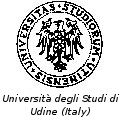Image credits:
Dense suspension of finite-sizeprolate ellipsoids settling in
still fluid. Authors: X. Jiang,
C. Xu, L. Zhao
Flyer:
Click here to download.Confirmed Keynote Speakers
Professor Lianping Wang
SUSTech (CHN)

Turbulence modulation by suspended finite-sized solid particles: DNS and theoretical modeling
Abstract:
The presence of a dispersed phase substantially modifies small-scale fluid turbulence. However, there has not been a comprehensive mechanistically-based understanding to predict turbulence modulation. In the first part of this talk, I will discuss interface-resolved simulation results pertaining to turbulence modulation by suspended finite-sized solid particles. In the second part, I will review our recent efforts towards physics-based modeling of turbulence modulation, focusing on the modulation of turbulent kinetic energy by dispersed particles. The model is formulated based on an energy flux balance equation at an inertial-subrange scale which naturally incorporates five relevant system governing parameters: ratio of particle size to Kolmogorov length, particle-to-fluid density ratio, particle volume fraction, relative mean slip velocity, and local flow Reynolds number. The model predictions are then compared to results from particle-resolved simulations and high-fidelity experiments. The capabilities of the model in explaining augmentation and attenuation of turbulence by the dispersed particles as well as the decay rate of turbulent kinetic energy will be discussed.
Brief Bio:
Professor Lian-Ping Wang received a Batchelor degree in Mechanics from Zhejiang University, Hangzhou, China in 1984, and a PhD in Mechanical Engineering from Washington State University in 1990. He was then a Visiting Research Associate at Brown University from 1990 to 1992, after which he was a Research Associate at Pennsylvania State University from 1992 to 1994 and an Assistant Professor of Mechanical Engineering at the University of Delaware from 1994 to 2001. He became an Associate Professor in 2001 and a Professor in 2010 at the University of Delaware. In 2017, he was appointed a Chaired Professor at Southern University of Science and Technology, China. Prof. Wang's areas of expertise include computational fluid dynamics, turbulence, particle-laden flow and immiscible multiphase flow, and their
SUSTech (CHN)

Turbulence modulation by suspended finite-sized solid particles: DNS and theoretical modeling
Abstract:
The presence of a dispersed phase substantially modifies small-scale fluid turbulence. However, there has not been a comprehensive mechanistically-based understanding to predict turbulence modulation. In the first part of this talk, I will discuss interface-resolved simulation results pertaining to turbulence modulation by suspended finite-sized solid particles. In the second part, I will review our recent efforts towards physics-based modeling of turbulence modulation, focusing on the modulation of turbulent kinetic energy by dispersed particles. The model is formulated based on an energy flux balance equation at an inertial-subrange scale which naturally incorporates five relevant system governing parameters: ratio of particle size to Kolmogorov length, particle-to-fluid density ratio, particle volume fraction, relative mean slip velocity, and local flow Reynolds number. The model predictions are then compared to results from particle-resolved simulations and high-fidelity experiments. The capabilities of the model in explaining augmentation and attenuation of turbulence by the dispersed particles as well as the decay rate of turbulent kinetic energy will be discussed.
Brief Bio:
Professor Lian-Ping Wang received a Batchelor degree in Mechanics from Zhejiang University, Hangzhou, China in 1984, and a PhD in Mechanical Engineering from Washington State University in 1990. He was then a Visiting Research Associate at Brown University from 1990 to 1992, after which he was a Research Associate at Pennsylvania State University from 1992 to 1994 and an Assistant Professor of Mechanical Engineering at the University of Delaware from 1994 to 2001. He became an Associate Professor in 2001 and a Professor in 2010 at the University of Delaware. In 2017, he was appointed a Chaired Professor at Southern University of Science and Technology, China. Prof. Wang's areas of expertise include computational fluid dynamics, turbulence, particle-laden flow and immiscible multiphase flow, and their




